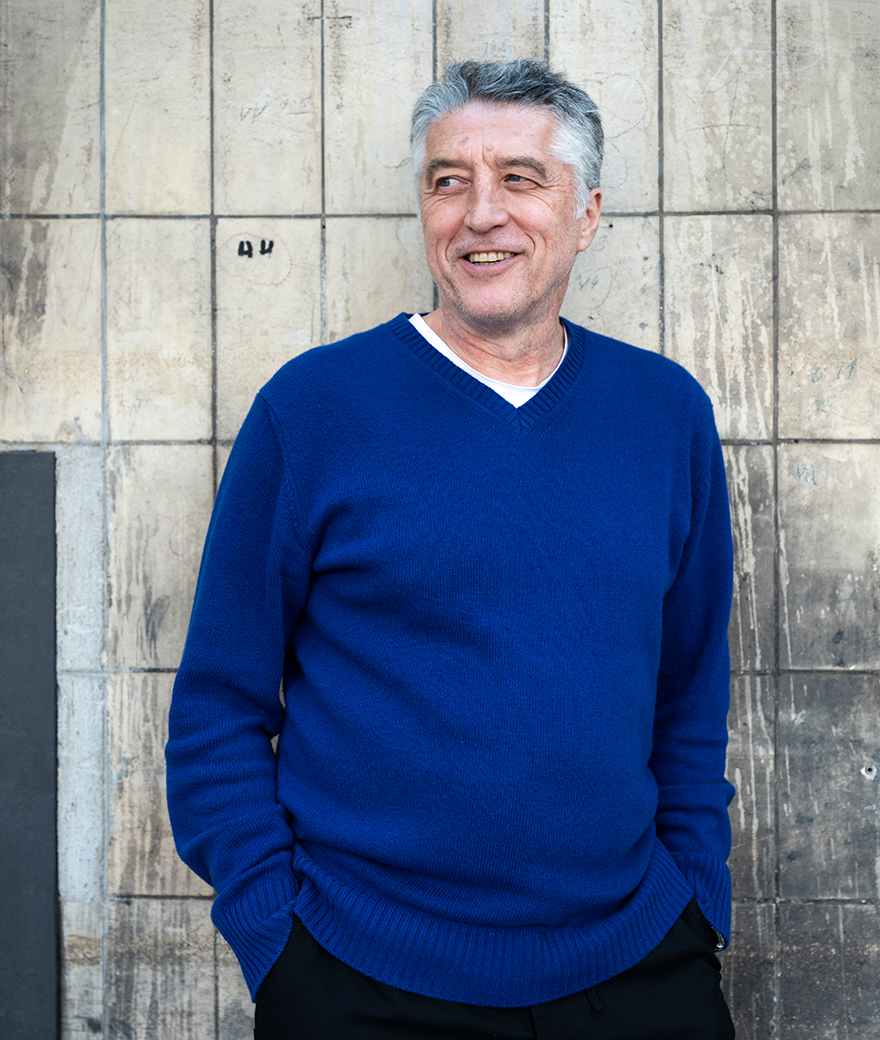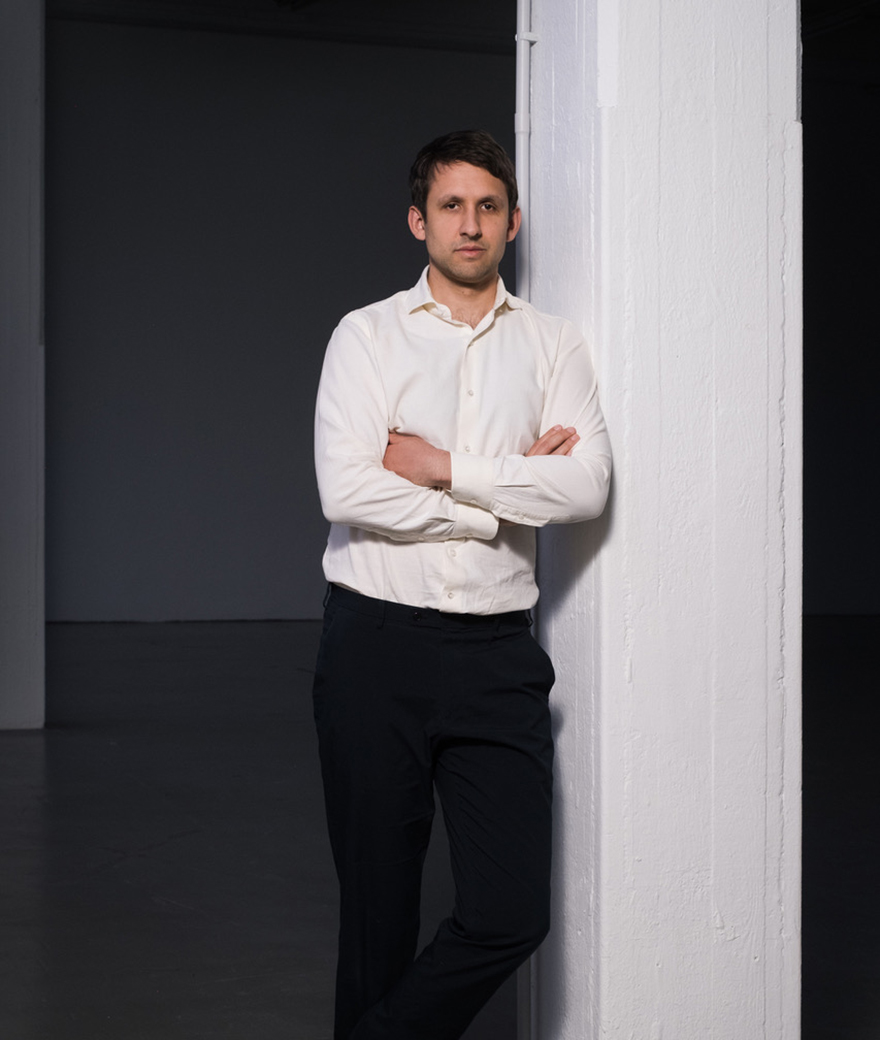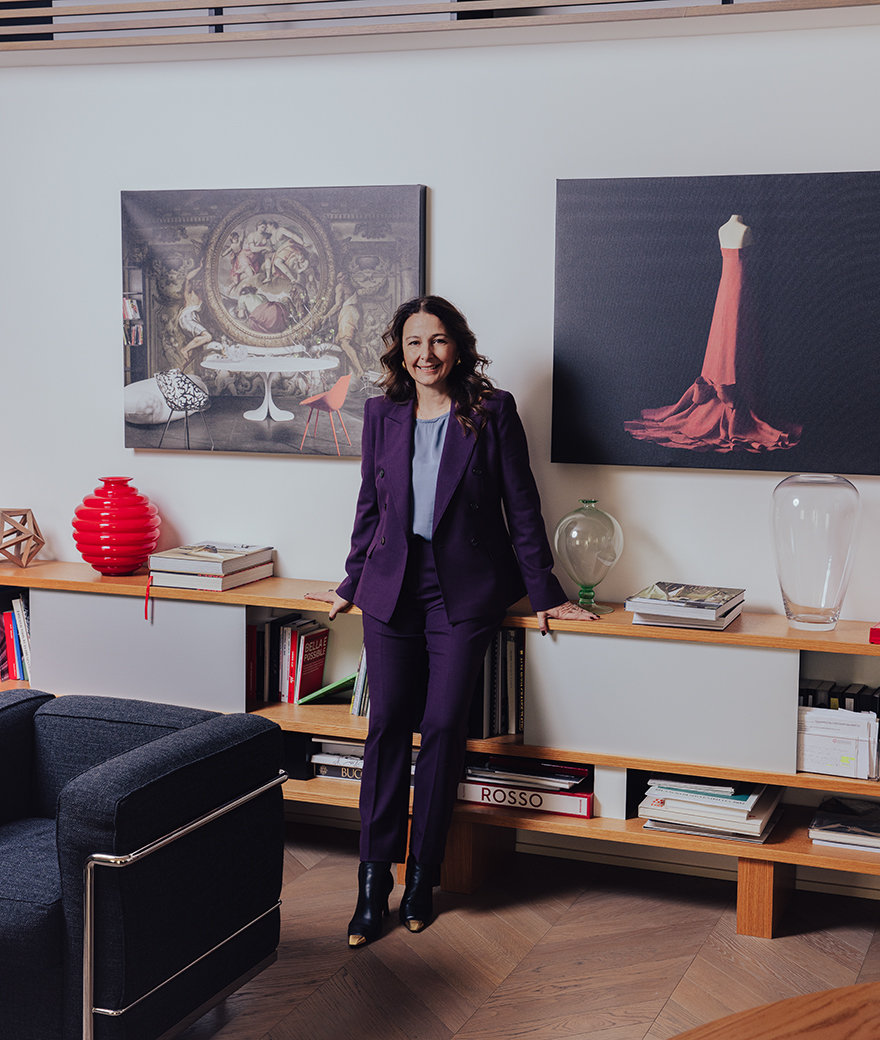A talk with Luigi Raiola
Luigi Raiola has been, alongside Antonio Pittarelli, the director of Libreria Internazionale Luxemburg in Turin since 2002. On 20 January 2025, the bookshop opened its new location in the Galleria Subalpina, a cultural landmark in the city. We met him to talk about the project by BRH+ studio which, in collaboration with Mutina, has transformed a historical space into a unique place with a contemporary touch: ceramics.
With more than a century of history behind it, the Luxemburg Bookshop in Turin is a vital cultural landmark. What does it mean to you to preserve and renew such an important place, both culturally and personally?
There is a word in your question that carries a profound meaning tied to the essence of the Luxemburg bookshop. That word is “to preserve”.
Some places feel as though they have stepped out of a medieval bestiary. They are spaces that seem to possess a soul of their own, feeding off the energy and breath of those who inhabit them. These places cannot be owned—they can only be preserved, with passion and love. The search for a new “home” for the bookshop, after 152 years, was a great growth opportunity for both me and my business partner, Tonino Pittarelli.
Think of the word “crisis”, which is almost always perceived with a negative connotation. Let us shift our focus to its origin—the Greek term krisis, which means to decide, to choose. Life is change; time is a constant becoming.
The new location is the result of the architectural project by studio BRH+. What do you think was the greatest challenge of this intervention? How did they succeed in transferring Luxemburg’s soul into the new space?
Fate led us to a space on the same street, just over fifty metres away. More precisely, three adjoining buildings, with an entrance on Via Cesare Battisti and another in Galleria Subalpina.
The second stroke of luck was meeting BRH+ studio, in the form of Marco Rainó and Barbara Brondi. Marco is a dear friend, a writer, a curator, and a man with a deep sensitivity to beauty. “Do you think you can transfer the soul of a bookshop?” One of the phrases I often hear from those entering the new space—sometimes for the first time—is: “It feels like it's always been here.” In those words lies the success of BRH+: to innovate and renew with love, maintaining the identity of a place through innovation.
How has the bookshop changed? And in what way has it remained the same?
The shelves are the same as fifty years ago, the floor is still wooden, the rugs are still there to muffle the sound of our footsteps, but everything is bathed in a different light. It’s as if a smile has suddenly appeared on a face. It’s still the same face, but different.
What was Mutina’s role in the reconfiguration of the space?
If a smile on a face is already a gift of beauty, a smile with dimples is a gift “amplified”. Mutina is exactly that.
If there is one thing that can influence a project more than any other, I believe it is attention to detail. Adagio by Ronan Bouroullec, placed on the grey ceiling above the checkout area, seems to be in dialogue with the vaulted red-brick ceiling of the adjoining bookshop section. One of Marco’s many masterstrokes.
Our micro-café, just twelve square metres, is made magical by the ceramics of Anastassiades covering its walls and floors, as well as the Rombini tiles by Erwan & Ronan Bouroullec on the counter, which make it resemble a home kitchen island. The Editions, placed on the tables, in the shop windows and atop some bookshelves, act as a kind of red thread, holding everything together in harmony. Like the secret ingredient in your grandmother’s cake.
How did your first contact with Mutina come about? What do you think of how, through ceramics, it has entered the worlds of design, architecture, contemporary art, and, through the MUT publications on its exhibitions, even the publishing world?
Thanks to the vision and friendship of a unique woman and dreamer named Helen Nonini. We met purely by chance within the walls of the old Luxemburg years ago, and a deep and lasting friendship was born. I believe nothing happens by chance, and that, even on that distant day, the seeds were already there for what was to come, because it was Helen, while I was trying to imagine a new home, who insisted on introducing me to Massimo Orsini.
Our meeting was a river of words, emotions and shared ideas—about reality, time, and the space surrounding us all.
I discovered how Mutina brought art into the world of ceramics and ceramics into the world of art, giving new perception to spaces.
The Editions have become an integral part of the display. How do they dialogue with the bookshop’s publishing heritage and with those who encounter them?
Book covers are the most beautiful splash of colour and warmth a wall can have. I think of the Pantone tones of Adelphi, the white of Einaudi—just to name two. The Editions, displayed on tables inside the bookshop and in the shop windows, feel like three-dimensional projections of the books’ contents.
This project is also part of the Being Mutina initiative, which explores new ways of connecting space, art and culture. What was your experience, and what did it mean to have Luxemburg engage with this broader vision?
I had the immense pleasure of discovering the Being Mutina project during the Salone del Mobile. Like Alice in Carroll’s novel, I felt as though I had fallen into a new dimension. The explosion of a photographic image into space. For us, Luxemburg is the first room in the Being Mutina project.
What are the main challenges of designing a cultural space that is also a place for connection and encounter?
Over the past twenty years, our society has been constantly thrown forward like a marble flung by a slingshot. A bookshop, unlike theatres or libraries, is a cultural outpost with a strong commercial identity as well. This changes everything, especially in the age of online shopping.
A bookshop, like a small village bar where people meet to play cards or bowls, to have a glass of wine or chat about life, must be a place of passage. A decompression chamber from what weighs us down. A place one can stop by every day—not always to buy a book, but to talk, to leave having gained something emotionally or humanly. A place to meet readers and writers—and then share a coffee or a glass of wine. Thanks to Mutina, we even have our own small kitchen with a terrace—the smallest café on the square: twelve square metres of welcoming beauty.
What is, in your view, ceramics’ artistic and design potential today?
It is a potential for unity and communion. Ceramics is matter in its most elegant attire—matter becoming art. At the same time, art finds in ceramics its materiality and everyday beauty. In today’s overwhelming contemporary art world, ceramics offer an accessible expression that can reach a wider public.
How do you imagine the future of Luxemburg?
To answer that question, I can’t seem to find the right words—but I smile. A smile that contains everything.





